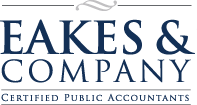Year-end Tax Planning- A Look at Taxable Income & Deductible Expenses
Taxpayers are often advised to use year-end tax planning to help reduce taxes. This can often mean postponing income or accelerating deductions to shift tax burdens to a later year. It could also involve the reverse planning if taxes are expected to be higher in a later year. There are a number of rules that apply in determining in what year a particular item of income or expense falls.
Effective planning depends on understanding taxpayer rules
Understanding those rules is essential to permit a taxpayer to do effective year-end tax planning and to file an accurate tax return.
· The taxpayer must know if they are on the cash method or accrual method of tax accounting. Individuals are typically on the cash method
· Under the cash method, income is included in the year the income is actually or constructively received
· Constructive receipt is when the income is within the taxpayer’s control but not actually received, with no substantial limitation on the taxpayer’s right to the funds
· Under the cash method, deductions or credits are permitted in the year when actually paid, unless they are required to be allocated to a different period to more clearly reflect income
· There may be a limit on the deduction of a payment if it creates an asset having a useful life extending substantially beyond the end of the year in which the payment is made
· Credit card payments are deductible in the year charged even if the credit card bill is not paid until the following year
· Checks can be deducted in the year mailed even if not cashed or deposited until the following year
· Items such as mortgage interest, real estate taxes, and property insurance can be prepaid in the current year for some portion of the following year
· A recent revenue ruling from the IRS clarifies that a taxpayer’s failure to cash a retirement plan distribution check received before year-end, but not deposited until after year-end, is still income in the year the check was received

